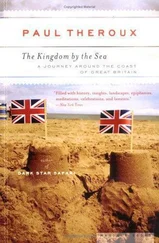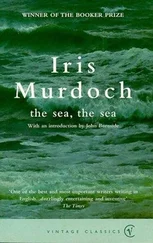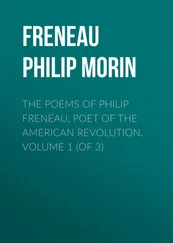The sea defines us, connects us, separates us. Most of us experience only its edges, our available wilderness on a crowded island – it’s why we call our coastal towns ‘resorts’, despite their air of decay. And although it seems constant, it is never the same. One day the shore will be swept clean, the next covered by weed; the shingle itself rises and falls. Perpetually renewing and destroying, the sea proposes a beginning and an ending, an alternative to our landlocked state, an existence to which we are tethered when we might rather be set free.
I say it isn’t much of a beach, but that doesn’t do it justice, since it has a beauty all its own – more so for being seldom visited out of season except by dog-walkers and anglers. It is set at the end of a shallow bay that marks the south-eastern limits of the city. To reach it, I ride along a waterfront set with desultory concrete shelters and backed by common land to which are chained half a dozen horses. Behind stands a post-war housing estate, one-quarter of whose population live in poverty.
The path ahead passes through a stand of trees, then gives way to the beach, bordered by a waist-high sea wall with a narrow ledge, just wide enough for a person to walk along. To the landward is a sweep of grass and an avenue of oaks and pines. Gnarled and bowed, they mark an old carriageway that leads, with a grandeur out of all expectation, to a Tudor fort and a Cistercian abbey that once dominated this eastern bank of the estuary. Now the abbey lies in ruins, surrounded by scrubby woods and stagnant stewponds, while the fort, built out of stone robbed from the dissolved abbey, became a grand Victorian pile, recently extended in a replica of itself as a series of expensive apartments.
In this interzone, the modern world has yet to wipe out the past. Although the city is in sight, this place can seem haunted on a winter’s afternoon, with its bare trees bent back by the prevailing sou’westerlies, and its rotting wooden piles, the remains of long-decayed jetties. The yacht club’s boats stand unattended in their pound, the wind rattling nylon lines against aluminium masts in a continual tattoo.
Further down the shore, after an interruption of small shops and terraced houses, is a country park, the site of a huge military hospital. It exerted its own influence for a century or more, but it too has been demolished, absorbed into the turf, leaving only a nuclear shadow and its chapel dome poking through the trees. One day those tower blocks on the shore will be romantic ruins, too, relics of the work of giants.
If the weather is good, I’ll cycle past the park to a far beach, overshadowed by holm oaks rooted in a low bank of gravelly, gorse- and bracken-clad cliffs, where southern England is slowly collapsing into the sea. As I ride, my route parallels the forest on the other side of the estuary. There may be barely three miles between me and its purple heath, but they might as well mark a continental divide. Not only because we are separated by water, but by virtue of what stands on the distant shore and now dominates the entire waterline, a triumvirate of new, industrial installations: oil refinery, chemical plant, and power station.
In the changing light, this cluster of cryptic structures could be anything. Tapering spires for a new place of worship; circular tanks as giant igloos, pale green with rusty streaks; silos like newly-landed space ships; tripod gantries ready to fire salvos of secret missiles. At dawn or dusk, the whole place might be a martial Manhattan, replicating every day, sprouting out of the shore, an alternative new forest of steel. There’s no human scale to this petropolis; it has a curiously temporary feel, although it has been here for half a century. It might be disassembled in a day and imported to some other shore on the other side of the world. Stripped down, utilitarian, it makes no apologies to its surroundings. It has only one function: to make the fuel that confirms its existence. It is brutal, practical, inevitable.
Like the nearby docks, this great complex, which employs more than two thousand workers, is sealed from public access. My own uncle worked there after his wartime service in Kenya, although I couldn’t tell you what he did – any more than I know what he was doing in the middle of Africa in 1943, beyond the photographs of him in khaki shorts and a pith helmet, along with aerogrammes sent out by his family and kept carefully preserved in a Senior Service cigarette tin.
I’ve grown up with this place, which is only just older than me; I have no memory of the virgin shore before the coming of the towers, now imprinted on my view of the shore. Their stacks occasionally burst into life like huge Bunsen burners, as though the whole thing were some gigantic experiment, or a memorial to an unknown warrior. First lit in 1951, these flares commemorate an age of energy and industry, power and destruction. Their function is to burn ‘excess gases’, but as their orange-red tongues lick the sky, they could be drawing directly from the molten depths of the earth, rather than the crude oil from the Middle East which is pumped from tankers that line the mile-long terminal, five abreast like petro-cows waiting to be milked, their bridges branded with slogans, NO SMOKING and PROTECT THE ENVIRONMENT.
To process its daily quota of three hundred thousand barrels of oil, Fawley sucks three hundred thousand tonnes of water from the sea, claiming to return it cleaner than it was before. (In fact, many living organisms are drawn in too: fish are caught in screens and often die, while smaller fry are sent through the factory’s cycle as though through a washing machine, a process which few survive.)
Indeed, the word ‘refinery’ itself is deceptive, since its end products have precisely the opposite effect on the world into which they are released. And while the site is declared to be perfectly safe, its neighbours live in the knowledge that in the event of an emergency, they would be evacuated from their homes, just as the islanders of Tristan da Cunha were evacuated from theirs during the volcanic eruption of 1961, and were brought to a military camp here, in the shadow of the neighbouring power station, close to where their descendants still live. Its cylindrical chimney, an enormous ship’s funnel on a concrete liner fading into pale blue, marks the end of the estuary and the beginning of the sea. Beyond is the tantalising outline of the Isle of Wight and its fields and downs. In the winter, when the trees lack leaves, I can see it from my window, its pairs of red points blinking like landing lights, foreshortening the distance between me and the sea, making it seem suddenly nearer.
Despite its industrial installations and historic layers, this is an unspectacular, unremarkable landscape. You could easily drive by and take away nothing from this place. Many do. No one writes books about this shore. No one who does not live here knows anything much about it, and even those who do would be at pains to report anything noteworthy about the place they see every day.
I just happen to live here. I didn’t choose to; it chose me. I might have found a more picturesque place, wild and romantic or urban and exciting; the kind of places people pass through here to reach. A port city relies on its relationship to elsewhere. Perhaps that’s why I like it so well, since it does not impose any identity on me. I came back here from habit as much as choice, like the birds that migrate to and from its non-descript shores.
You assume you know your home. It’s only when you return that you realise how strange it is. I first saw this beach half a century ago, but all those years have made it seem less rather than more familiar. I’ve taken it for granted. But now, as I look out over its expanse, it occurs to me that what I thought I knew, I didn’t really know at all.
Читать дальше












